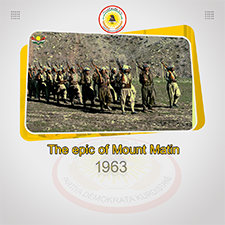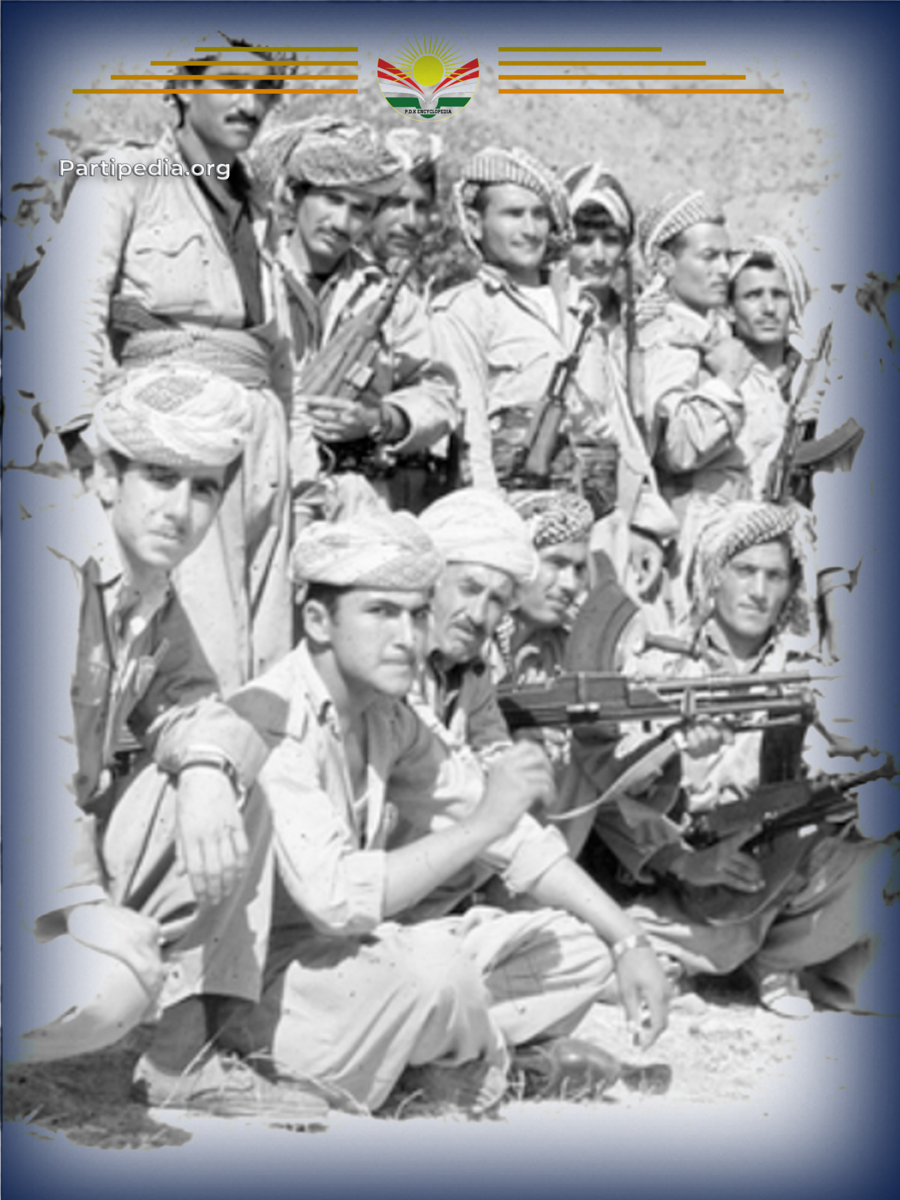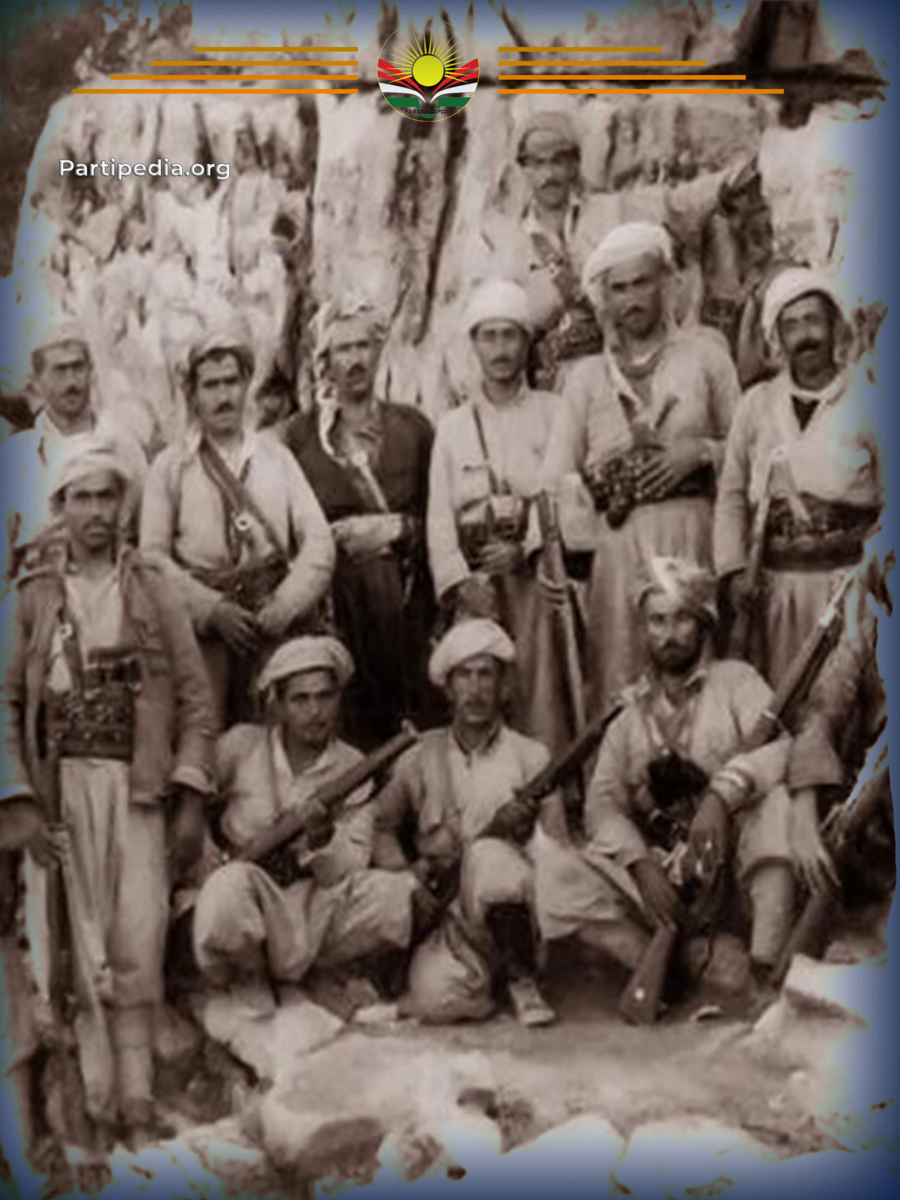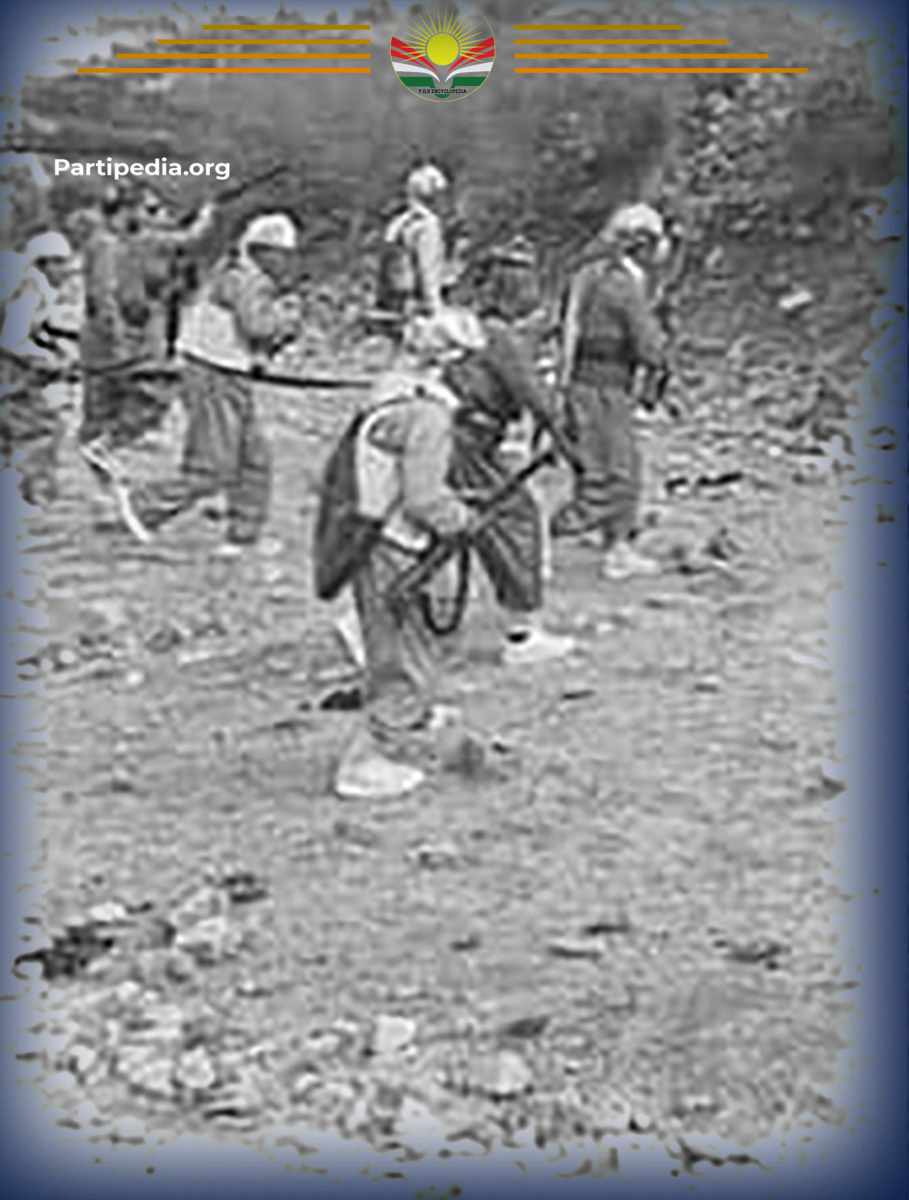Matin Mountain is one of the most challenging mountains in the Kurdistan region in the Badinan region of the Amedi district. It was an important and strategic area to connect Barzan and Badinan regions. Therefore, the Iraqi government has repeatedly attacked and tried to take over. In 1963, this region, like all other regions, faced a tremendous historical epic as The Iraqi army attacked from several directions with an extensive and ambitious plan. In order to end the activities of the Kurdish revolution in the region and return the place under its control.
After the Ba'athist military coup and the fall of the regime of Abdul Karim Qasim, the Iraqi government's war and attack on Kurdistan was suspended for a while and negotiations between the revolutionary leadership and the Iraqi government were held. However, the Ba'athists soon refused to listen and heed the Kurdish demands. On June 10, 1963, they resumed their aggression on Kurdistan, especially in the regions of Barzan and Badinan. In mid-August, the Iraqi army mobilized a large force of soldiers and mercenaries, along with a Syrian army force called the Yarmouk Force, commanded by Lieutenant Fahd al-Sha'ir, who had crossed the border to support the Iraqi government. To destroy the Kurdish revolution through an agreement between the Iraqi and Syrian governments.
After the information of the attack reached the Peshmerga forces and the revolutionary leadership from the loyalists and supporters of the revolution, that the government intended to launch a widespread incursion on the area of Amedi, The revolutionary leadership in the region planned to counter the aggression and defeat it as follows: A Peshmerga force commanded by Faisal Hassan Nzarki and Haji Shaban was deployed in Ashawa to prevent the attacking force from attacking Mangeshke. Another force was deployed in Bamarni under the command of Jamila Soor Bamarni. Another force was sent to Ardna, Another force commanded by Arif Sulaiman Doski was deployed between the two regions of Mazuri Bala and Doski Zheri. A reserve force of about 300 Peshmergas, commanded by Issa Suwar, was on standby in the Gulia region. Another force was prepared from the Zakho force. In order to be on alert between Batifa and Zakho, another force under the command of Saeed Haji Shaban remained in the village of Kani Rash and blocked the road from Sar-e-Amedi to Barwari Zhori.
As mentioned above, in mid-August, a large government force with heavy weapons, armoured vehicles, aircraft, and hundreds of infantry and mercenaries (jash) appeared from Duhok to the Peshmerga positions in Suwaratuka.
Although the Peshmerga initially defended and prevented them, but because of the proportions of the attack, they could not continue, but in several places, withdrew their forces, and the Iraqi army began to burn the villages (Banda, Kovli, Kurema, Baroshka Saadina, Mhlamba, Derakzhnik, Zewka Kandla, Zewka Abo , Bana Sura, Besfki Alkishk). The people of these villages were forced to hide in the valleys and valleys to protect their lives.
The government forces continued their advance until they reached Mangeshke district, and there they proceeded to Bamarne airport with the district forces and made it their base of operations. They then divided the plan of attack into four parts:
First flank: From Bamerni airport to Matin Mountain and west of Barwari Zhori region.
Second flank: From Bamarne airport to Sar-e-Bamarne.
Third flank: From Sarsang to Ardna, Navela village, Matin Mountain and Shelaza village.
Fourth flank: From Amedi to Sar-e-Amedi, Charcheli and Kani Mase districts.
The major offensive began on August 20, 1963, and the mercenaries (jash) were divided into arms of war. The government's attack initially made significant progress on all flanks. They were able to capture Mount Matin and Bamarni and martyred Jamila Sor Bamarni and two Peshmergas. There was chaos among the Peshmerga forces. Some of them gave up and laid down their arms, while others fled to Turkey. In coordination with the Iraqi government, the Turkish government Armed the mercenaries in the REKANI territory. They captured several Peshmergas in Hakkari and handed them over to the Iraqi government.
Then the Peshmerga forces were able to obtain a large number of weapons and ammunition and rearm themselves. During the 45 consecutive days of fighting and clashes that continued in the defence with the support and assistance of the National Defense Forces, They adopted another plan from the defence to attack the Iraqi army forces under the command of (Isa Suwar) and his assistant (Ali Halo) under the name of (Victory or Death Battle). They promised to take Mount Matin. The first step of the Peshmerga offensive began in the village of Gabnerke on the night of 4-5 October 1963. The Peshmerga army was divided into several factions. They attacked the military and mercenaries,
from dusk to dawn, They dealt the Iraqi army a very deadly blow, and They defeated them in all flanks; they were able to drive the government forces back to Bamarne airport, which was their base of operations, and recapture Mount Matin.
After the defeat of the Iraqi and Syrian armies, both suffered heavy losses, including the destruction of most of the Syrian(Yarmouk Force) and Iraqi troops, leaving the bodies of 113 dead, including several Syrian soldiers. Hundreds of others were wounded, and several vehicles were destroyed. The Peshmerga's achievements included two 103mm cannons, 400 rifles, 15 arrows, a large amount of ammunition and a large amount of military equipment. The Peshamarga casualties included 36 martyrs and 78 wounded from both Peshmergas and National Defense Forces.
The triumph of the Peshmerga in Mount Matin not only boosted the morale and bravery of the Peshmerga forces, but it was also a significant win for the revolution in Badinan. Moreover, it alleviated the immense pressure that the Iraqi army had been imposing on Barzani for months. The attacks on BARZAN had intensified since June, causing the residents to contemplate seeking refuge in Turkey. However, with this victory, the people of Barzan regained hope and courage to return to their villages and homes.
Resources:
-
غازى عادل گەردى، پێشمەرگەیەک لە خزمەت ڕێبازى بارزانیدا حەجى بیڕۆخى، بەرگى یەکەم چاپى دووەم، تورکیا، ٢٠٢١.
-
مسعود بارزانی، بارزانی و بزوتنەوەى ڕزگاریخوازی کورد، بەرگی سێیەم، بەشی یەکەم، شۆڕسی ئەیلوول ١٩٦١-١٩٧٥، چ: یەکەم ٢٠٠٤.
-
هاوکار کەریم حەمە شەریف، شۆڕشى ئەیلوول ١٩٦١-١٩٧٠، چاپى یەکەم- چاپخانەى زانکۆى سەلاحەدین، هەولێر، ٢٠١٢.
-
هۆژین مەسعود سەرنى، شورەشا ئیلونێ ل دەڤەرا بەهدینان ١٠٦١- ١٩٧٥، چاپى یەکەم، ٢٠١٨.
-
وەلى زبێر هۆستان، چەند ڕووداو و بەسەرهاتێک لە شۆرش و ڕاپەڕینەکانى بارزاندا، چ: یەکەم، چاپخانەى ڕۆژهەڵات، هەولێر، ٢٠١٧.
-
ئارى کەریم، چەند لاپەڕەیەکى زیندوو لە شۆرشى ئەیلوولدا، چاپخانەى خەبات، دهۆک ١٩٩٩.
-
شەوکەت مەلا ئیسماعیل حسن، ڕۆژانێ لە مێژووى شۆرشى ئەیلوول، چاحى یەکەم، هەولێر، ٢٠٠٧.








